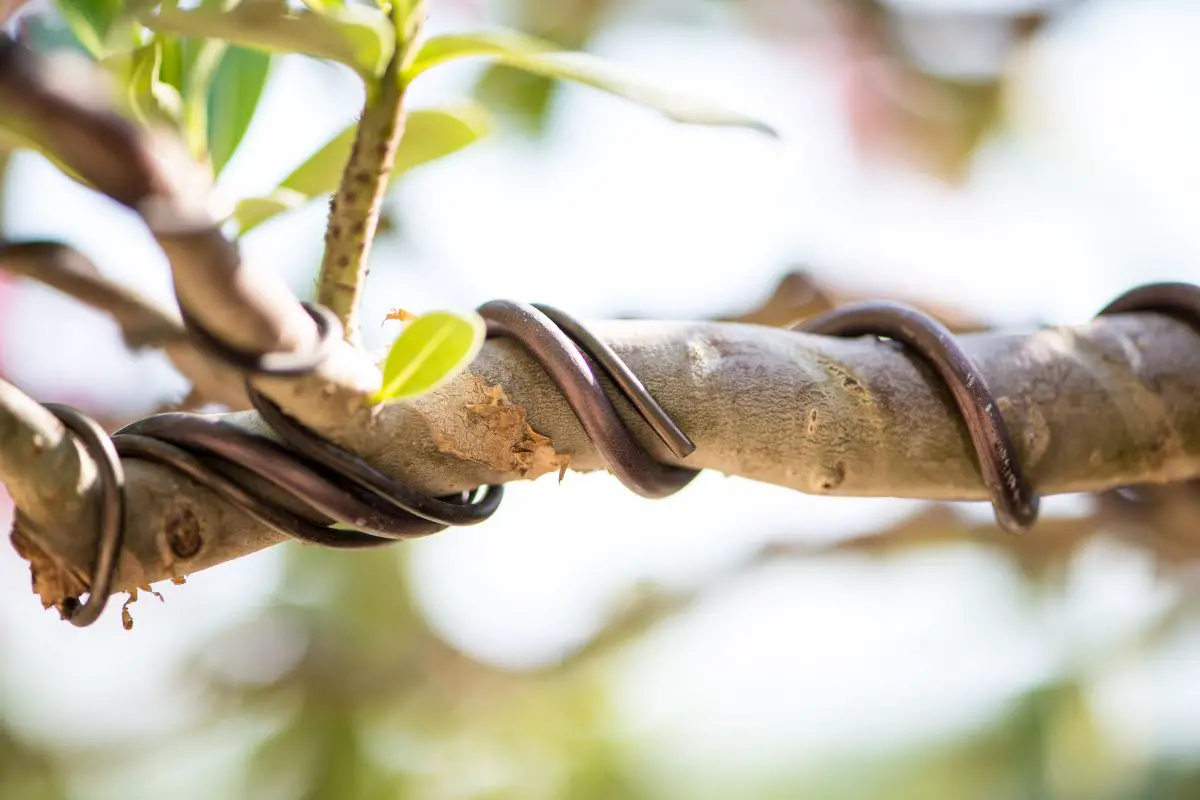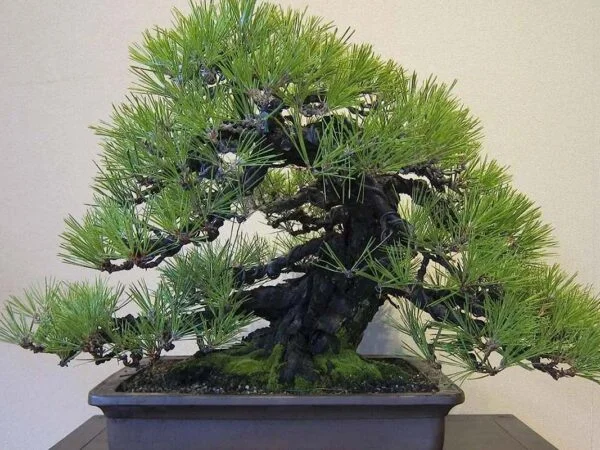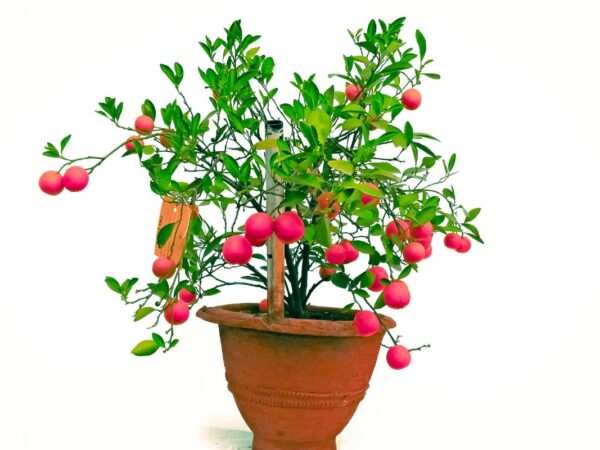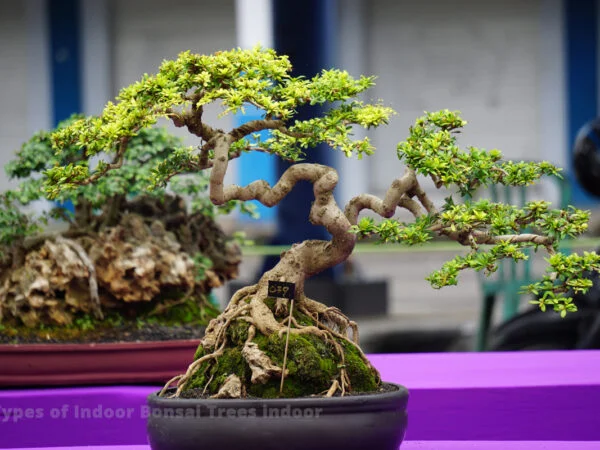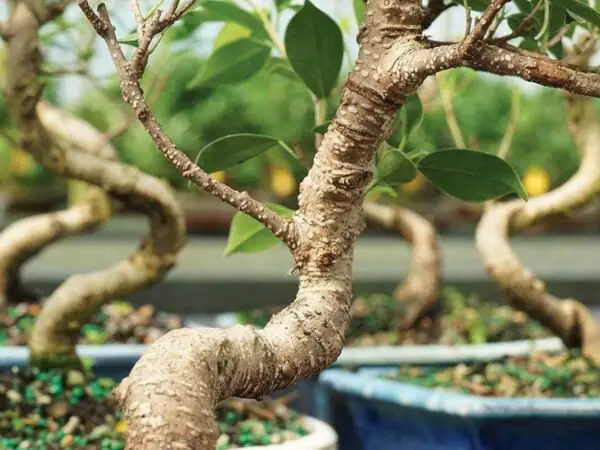Wire is the unsung hero. The right wiring can make or break the shaping and training of your bonsai tree, especially when working with deciduous trees. It's essential to consider the branch structure and use good wiring techniques to create natural-looking bends. Understanding the types of good wiring available, their flexibility, and strength is crucial for choosing the best tools for wiring deciduous trees with copper wire. Wire cutting in bonsai art not only allows for precise manipulation but is also essential for achieving the desired aesthetic results.
Choosing the right wire type, such as copper wire, and knowing how to work with guy wire are crucial for shaping the bonsai tree. Mastering techniques such as single, double, and guy-wires, as well as wrapping and anchoring correctly, will elevate your wiring game. Additionally, learning how to gauge and bend copper wire is a crucial step in mastering wiring. Join us as we delve into the world of bonsai wiring and uncover the secrets to sculpting stunning miniature masterpieces using different tree species, wire cutting techniques, and various wire sizes, including copper wire.
Understanding Bonsai Wire Types
Copper bonsai wire is a good tool for shaping and training bonsai trees. Understanding the different wire types, including gauge and how to bend it, can significantly impact the success of your bonsai endeavors. Let's delve into the characteristics and applications of two popular bonsai wire types: Anodized Aluminium and Annealed Copper. Both wire types come in various sizes and are good for wiring different tree species.
Anodized Aluminum
Anodized aluminium wire is favored by bonsai growers for shaping branches due to its lightweight nature. Copper and bonsai tree wires are also popular choices. This type of wire comes in various colors, allowing for discreet or decorative use on bonsai trees. People can choose from copper or aluminium gauge wire to suit their preferences. Its resistance to corrosion makes copper wire and aluminium wire suitable for long-term application, ensuring that thick wire maintains its shape and structure over time. Copper bonsai wire is also a great option for shaping and training bonsai trees.
Annealed Copper
Annealed copper wire offers greater strength and durability compared to aluminium wire, making it ideal for training thicker branches and trunks of bonsai trees. When you pack a lot of aluminium wire, it is essential to use the right gauge to avoid damaging the trees. The flexibility of annealed copper allows it to be reused after undergoing the annealing process, which restores its pliability for continued use in shaping and training the tree. Aluminium wire, aluminium bonsai wire, and thick wire are often used for this purpose and are available in a pack.
Understanding the distinctions between anodized aluminium and annealed copper wires empowers bonsai enthusiasts to make informed decisions based on their specific needs. Choosing the right aluminium wire from a lot can be crucial for shaping bonsai trees effectively. Whether aiming for intricate branch manipulation or robust trunk training, choosing the right copper or aluminium wire type is crucial for achieving desired results in bonsai cultivation. Using the right wire can make a lot of difference in shaping the bonsai.
Selecting the Right Bonsai Wire Size
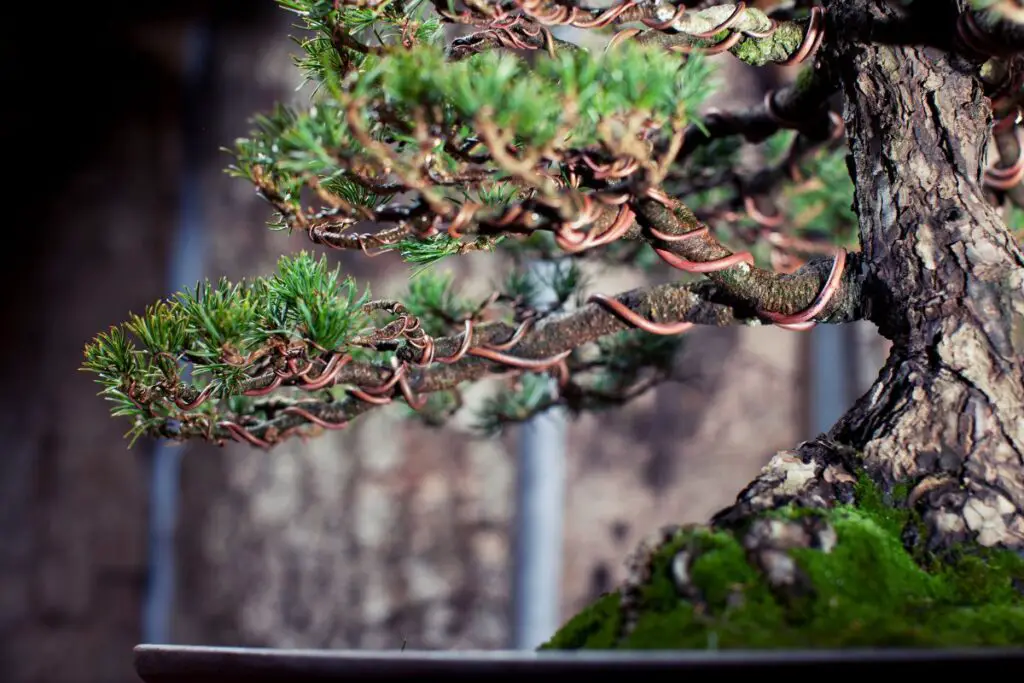
Selecting the right bonsai wire size, whether it's made of copper or aluminium, is crucial for effectively shaping and training your bonsai tree. The wire thickness, copper and aluminium, and tree size considerations play a significant role in determining the appropriate wiring techniques.
Wire Thickness
Selecting the appropriate copper or aluminium bonsai tree wires thickness is essential to ensure that it provides sufficient support for bending without causing damage to the branches. When choosing wire thickness for electrical wiring, consider the branch size and the type of tree, as well as the conductivity of different materials like copper and aluminium. Thicker copper wire is suitable for providing ample support when bending larger or heavier branches, while aluminium wire is suitable for providing ample support when bending larger or heavier branches. It prevents the copper wire from cutting into the bark during shaping, while aluminium wire serves a similar purpose. However, avoid using excessively thick copper or aluminium wire on delicate branches as it can cause more harm than good by damaging or scarring them.
Tree Size Considerations
Different sizes of bonsai trees require varying copper and aluminium wire sizes to effectively shape and train them. Small, medium, and large bonsai trees each demand different wiring techniques using copper wire and aluminum wire. For small bonsai trees, thinner and shorter copper and aluminium wires are adequate for shaping delicate branches without overwhelming them. Medium-sized trees may require slightly thicker copper or aluminium wires to provide enough support for moderate bending, while larger trees will need thicker and longer copper or aluminium wires to accommodate their robust branches.
When considering the age of the tree, it's important to adjust both the length and thickness of the copper and aluminium wire accordingly. Younger trees with more flexible branches may require lighter gauge copper or aluminium wires compared to older trees with thicker and more rigid branches. Adjusting these factors based on the age of the tree ensures that you're not applying excessive force during shaping with copper bonsai wire or aluminium bonsai wire, which could potentially harm or stunt its growth.
Techniques for Wiring Bonsai Trees
Branch wiring methods are crucial in shaping bonsai trees. Properly securing copper and aluminium wire ends is essential to prevent slipping or damaging the bark. Utilize anchoring techniques such as hooking, looping, or twisting with copper bonsai wire or aluminium bonsai wire to ensure stability without causing harm to the tree's structure. By using copper bonsai wire, aluminium bonsai wire, or copper wire, you can maintain control over the direction and angle of growth for each branch of your bonsai tree.
Maintaining consistent spacing between wire coils is vital for even support when employing wiring techniques on bonsai trees, especially when using copper wire. This helps avoid creating gaps that may lead to uneven bending or scarring, especially when using copper bonsai wire, aluminium wire, or copper wire for shaping a bonsai tree. Carefully adjusting the spacing as you progress along the branch or trunk ensures that the tree's natural form is preserved while achieving the desired design using copper wire and aluminium wire.
Guy-wires are an effective tool for gradually repositioning heavy or stubborn branches on bonsai trees. When using guy-wires, securely anchor them to stabilize the adjusted position and minimize stress on the tree. It's important to employ copper wire and aluminium wire techniques sparingly to avoid excessively stressing the tree, as too much manipulation can be detrimental to its health.
How to Apply Bonsai Wire Correctly
Applying wire to bonsai trees is a delicate process that requires precision and care. When wiring, always start from the base of the branch or trunk and work your way towards its tip using copper wire or aluminium wire. This technique ensures that the wire provides support throughout the entire length of the branch, allowing for uniform shaping.
It's crucial to apply gentle pressure while wrapping the wire around the branches to avoid damaging the delicate bark. The aim is not to constrict or injure the tree but rather to guide its growth in a desired direction using copper wire. Carefully monitor the wired areas for any signs of constriction, such as indentations or discoloration, which could impede sap flow and harm the tree.
To maintain clarity in wiring patterns and prevent crossed wires, it's essential to ensure that wires do not intersect or tangle with each other. Regularly inspecting wired areas helps in identifying any crossed wires promptly so that they can be corrected without causing stress or damage to the branches.
Double-wiring comes into play when dealing with thick branches that require additional support during shaping, especially when using copper wire. By utilizing two parallel wires, you can distribute pressure more evenly along the branch, reducing strain on individual sections. When double-wiring branches, it's important to ensure that both wires are evenly spaced and provide balanced pressure. This technique allows for effective manipulation of thicker branches using copper wire without risking breakage or damage.
Shaping Bonsai with Wire
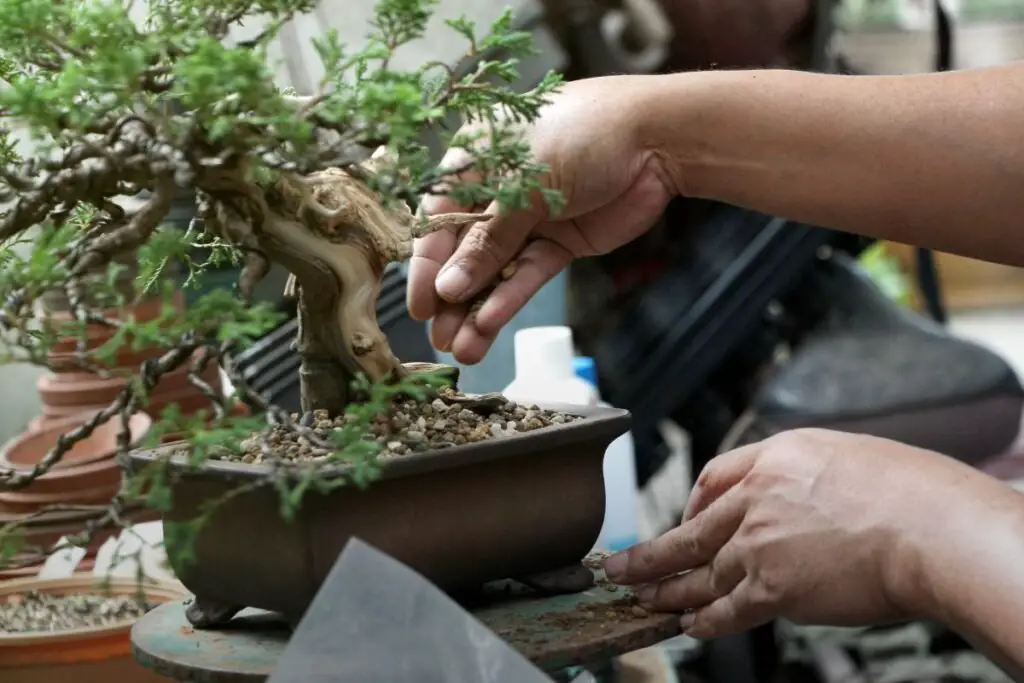
Bonsai wire is an essential tool for shaping the intricate and captivating forms of bonsai trees.It's crucial to do so gradually over time to avoid causing sudden stress on the tree. Applying steady pressure with copper wire while monitoring the branch's response allows for controlled shaping without harming the tree. Taking breaks during the copper wire bending process is also important as it provides an opportunity to assess the progress and make any necessary adjustments.
Managing wire bite is another critical aspect of using bonsai wire effectively. Regularly monitoring wired areas helps prevent wire from cutting into the bark as the tree grows. If signs of biting become apparent, adjusting wire positioning can alleviate potential damage. Using protective materials like raffia to cushion against wire bite can safeguard the tree's health and promote successful shaping.
When applying bonsai wire for shaping, selecting the right type of wire is paramount. Copper bonsai wire and aluminum bonsai wire are among the best options available. Copper wire is known for its strength and malleability, making it suitable for shaping thick branches, while aluminum wire is ideal for more delicate branches due to its flexibility and ease of use.
Seasonality in Bonsai Wiring
Understanding the seasonality of wiring is crucial for achieving optimal results. Let's delve into the best times to wire and seasonal care practices to ensure the health and vitality of your bonsai trees.
Best Times to Wire
- Optimal times for wiring your bonsai trees include early spring before new growth emerges. This period allows you to shape the branches while avoiding interference with the development of fresh foliage.
- It's essential to avoid wiring during periods of extreme heat or cold, as this can stress the trees and impede their ability to recover from the wiring process.
- Considering individual species' growth patterns when timing wiring is also important. Some species may have specific growth cycles that make them more receptive to wiring at particular times of the year.
Seasonal Care
Monitoring wired areas during growing seasons is imperative to identify any potential constrictions caused by the wires. As your bonsai tree continues to grow, regularly inspecting the wired areas will help you detect any signs of wires cutting into the bark or hindering healthy growth.
Adjusting wires as necessary to accommodate seasonal growth ensures that your bonsai trees continue to develop in a balanced and aesthetically pleasing manner. By making timely adjustments, you can prevent wires from becoming embedded in the bark or causing damage due to excessive pressure on expanding branches.
Removing wires before they can cause damage due to growth is a critical aspect of seasonal care for wired bonsai trees. As branches thicken and mature, leaving wires on for too long can lead to scarring or even girdling, which could compromise the overall health of your bonsai tree.
Removing Wire from Bonsai Trees
Dealing with Wire Bite
Address wire bite promptly by repositioning or removing wires. When wires begin to cut into the bark of a bonsai tree, it can cause scarring and affect the overall health and appearance of the tree. By repositioning or removing wires at the first sign of wire bite, you can prevent long-term damage.
Apply healing paste or cut paste on affected areas after wire removal. These pastes aid in the recovery process by promoting faster healing and minimizing scarring. They act as a protective barrier, shielding the wounded area from potential infections and diseases.
Allow time for natural healing once wires are removed. After addressing wire bite and applying appropriate treatments, it's crucial to give the tree ample time to heal naturally. This process may take several months, but it is essential for the bonsai's overall health and aesthetic appeal.
Safe Removal Practices
Remove wires carefully by unwinding rather than pulling them off. Careless removal can lead to unnecessary damage to the tree's delicate branches and bark. Gently unwind each wire, ensuring minimal disturbance to the bonsai's structure.
Use pliers or a hook tool if wires have grown into the bark. In cases where wires have embedded themselves into the bark, employing pliers or a hook tool can facilitate their safe removal without causing harm to the tree.
Inspect removed wires for any signs of damage before reuse. Before considering reusing removed wires, thoroughly examine them for kinks, bends, or weak spots that could potentially harm your bonsai tree in future applications.
Aftercare Following Bonsai Wiring
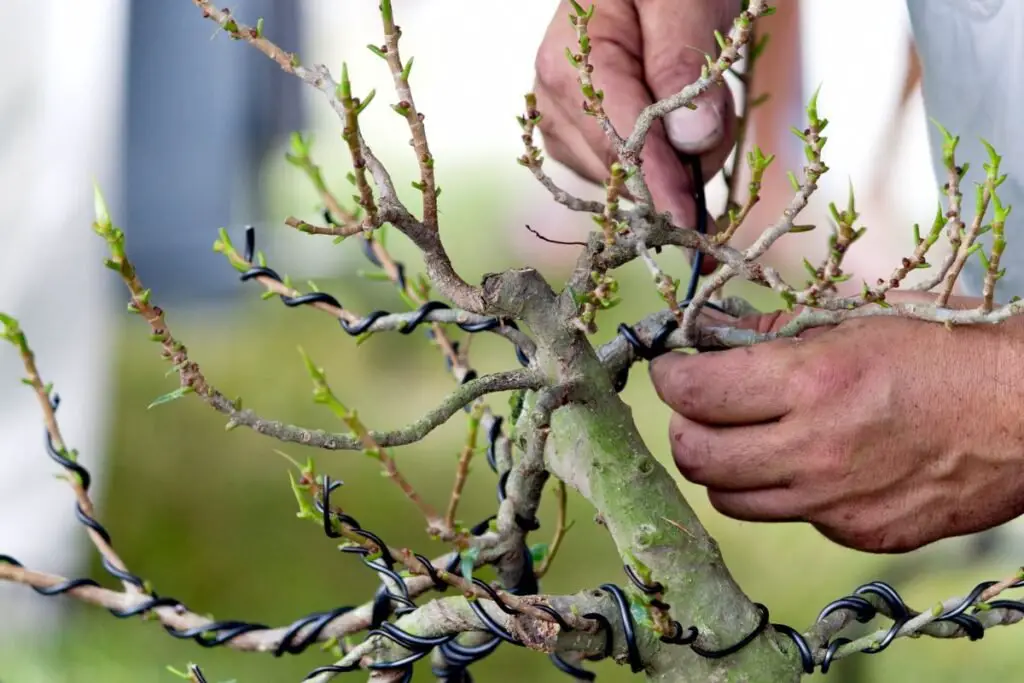
After wiring your bonsai tree, it's crucial to provide proper aftercare to ensure its healthy growth and development. Let's delve into the essential steps for aftercare following bonsai wiring.
Monitoring Growth
Regularly observe wired areas for signs of new growth or swelling. As the tree begins to grow, keep a close eye on the wired sections to prevent the wires from cutting into the expanding bark. Adjusting wires accordingly as the tree develops is vital to avoid any damage caused by constricting wires.
Adjusting Wires
It's important to make gradual changes by loosening or tightening them as needed. Reevaluate wired areas periodically and exercise caution when making adjustments to avoid causing any harm to the delicate branches and trunk of the bonsai tree.
Conclusion
Congratulations! You've now mastered the art of wiring bonsai trees. From understanding wire types to shaping and aftercare, you're equipped with the knowledge to elevate your bonsai game. Now, it's time to put your skills into action. Head to your garden, grab your wire cutters, and start sculpting your bonsai into stunning masterpieces. Don't be afraid to experiment and let your creativity flow. Remember, practice makes perfect, so keep refining your techniques and enjoying the rewarding journey of bonsai cultivation.
Frequently Asked Questions
FAQ
What is the purpose of wiring bonsai trees?
Wiring bonsai trees allows you to sculpt and shape them into beautiful, artistic forms. It helps guide the growth of branches and trunks, creating the desired aesthetic appeal.
How do I choose the right bonsai wire size for my tree?
Select a wire size that is one-third the thickness of the branch or trunk you intend to wire. This ensures flexibility and strength without causing damage to the tree.
When should I apply wire to my bonsai tree?
The best time to apply wire to your bonsai tree is during its growing season when it's actively producing new shoots. This allows the wire to gently guide and shape new growth as it develops.
Is it necessary to remove wire from bonsai trees after shaping?
Yes, it's crucial to remove the wire at the right time to prevent scarring or cutting into the bark as the tree grows. Typically, wires should be removed within 3-6 months depending on how fast your tree grows.
Can I reuse bonsai wire after removing it from a tree?
While reusing bonsai wire may seem cost-effective, it's not recommended as it loses its flexibility and may cause damage or scarring when reapplied. It's best to use fresh wire for each wiring session.
Image Source: Paid image from CANVA

